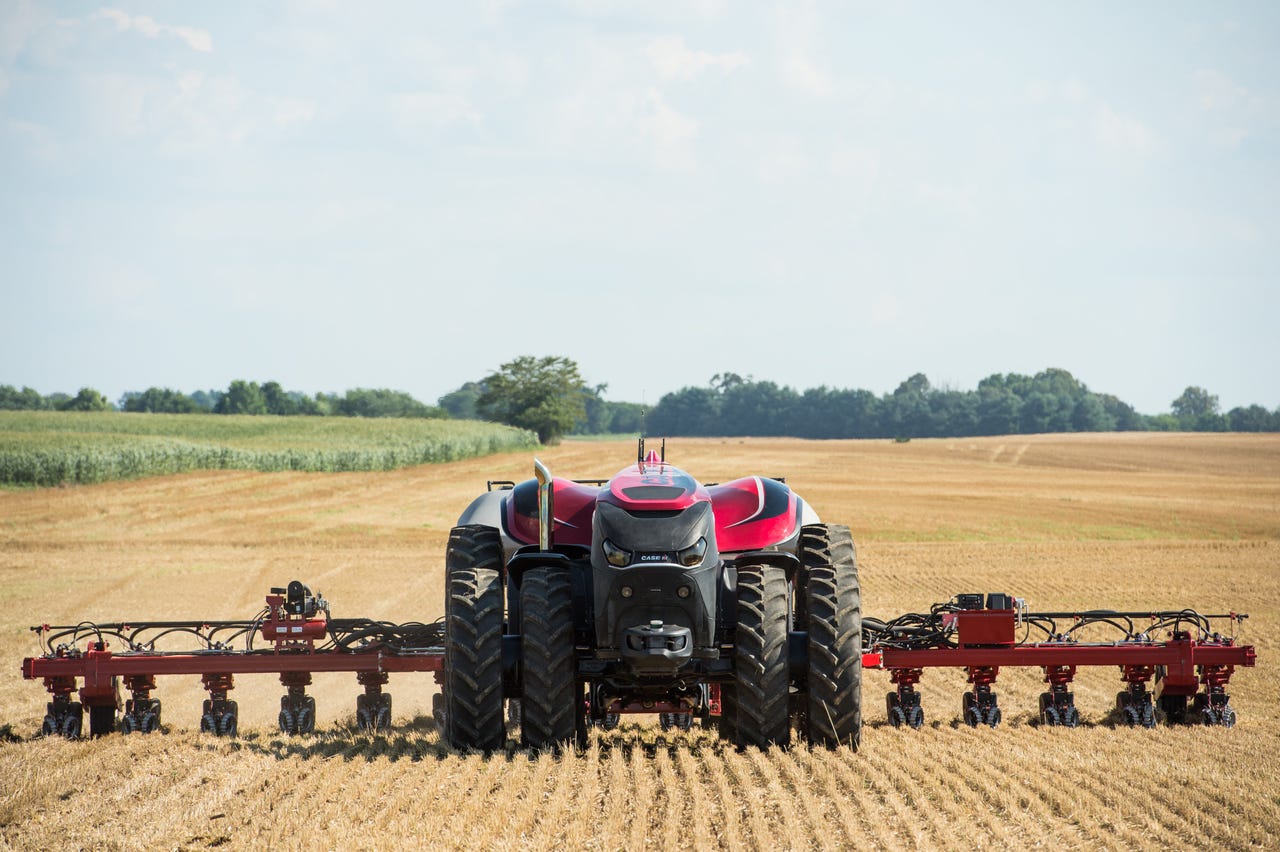Autonomous tractors could turn farming into a desk job


A driverless tractor could run around the clock. (Image: CNH Industrial)
CNH Industrial unveiled an autonomous tractor concept at the 2016 Farm Progress Show in Iowa during the last week of August. These self-driving tractors would be able to work around the clock while also providing real-time data monitoring. Farmers would program the tractors to accomplish specific tasks. Then, instead of sweating in the fields, they could tend to livestock or even sit in an air-conditioned office and monitor the tractors from a tablet or computer. In essence, automated equipment could turn farming into a desk job.
To create the robotic tractor, CNH Industrial, a UK-based company that specializes in agricultural equipment and other capital goods, partnered with Utah technology firm Autonomous Solutions Incorporated. Estimated costs for the autonomous tractors have not been revealed yet.
The concept tractors are equipped with a complete sensing and perception package that includes radar, LiDAR, sensors, and video cameras. These features enable the vehicles to avoid obstacles so they don't need to fenced off from people or livestock. If something (or someone) unexpectedly crosses the tractor's path, it will immediately stop and the farmer would be informed. The farmer could then use the onboard cameras to investigate the obstruction and decide how to respond. For example, if a tumbleweed blows into the path, the farmer could command the tractor to ignore it and forge ahead. If the obstacle leaves the sensing zone, then the tractor could either stay still until a supervisor instructs it to continue, or if it has been programmed for more automation, the tractor could simply resume operation.
This could be the future of farming. (Image: CNH Industrial)
Looking ahead, CNH plans to further develop the sensing and perception systems to enable more detailed processing of data so that more complex tasks can be automated. In the future, similar autonomous technologies could be extended to all farming machinery, including combine harvesters, grain transport, and support vehicles.
The self-driving features would help farmers reduce labor hours, but there is also enormous potential for data monitoring. As tractors become more advanced, farmers can collect valuable information about soil and crop conditions that will help them make decisions about optimal growing practices. Better yet, the tractor could make its own decisions, such as automatically moving to a different field in response to weather conditions.
Any new technology that makes work more efficient will raise anxiety about whether human laborers will be replaced by machines. We reached out to the company to ask whether farm workers should be afraid that robotic tractors will steal their jobs. A CNH Industrial spokesperson replied:
Autonomous tractors will not steal jobs from human farmers, rather they will assist farmers to make the most of ideal windows to enhance their productivity. This is of particular relevance when planting -- as a farmer will be able to work 24 hours per day to get more of the seed in the ground at the ideal time. Furthermore, they enable farms to overcome a shortage of skilled labor during these key windows.
Autonomous tractors should be considered an addition to the farm -- they do not replace farm workers, rather they enable the farmer to make optimal use of these short windows and enable them to redeploy their employees to value added tasks. As such, these autonomous machines will enable farmers to improve their productivity and operating efficiency. It should also be noted that the majority of time farmers and farm workers spend on tasks currently, is not linked to tasks which autonomous tractors are developed to complete.